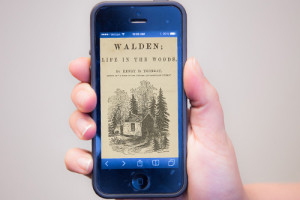Throughout our  project, we had to utilize various new technologies that many of us were not familiar with. A majority of our in-class planning time was spent writing scripts for our videos, and deciding what information was vital for using the site, and therefore warranted a video. We used the preexisting help page to guide us in deciding how to break up and designate the videos. We pulled from our knowledge of help pages we’ve used in the past, and came to the conclusion that one of the problems we’ve encountered with video help pages is that it’s difficult to pinpoint the instructions that directly address the individual problem. We considered a table of contents for our video but even that seemed too inefficient. We endeavored to create a more productive tutorial that could offer users instant and specific guidance. As a result, we decided to make a multitude of shorter and more direct videos, to establish that the help page is as user-friendly as possible. It was up to us to condense as much aid and instruction into a series of short tutorials. It was not a simple feat since the previous year’s group could compile their detailed instruction into a drawn-out text. Additionally, we searched for a way to put our own spin on it.
project, we had to utilize various new technologies that many of us were not familiar with. A majority of our in-class planning time was spent writing scripts for our videos, and deciding what information was vital for using the site, and therefore warranted a video. We used the preexisting help page to guide us in deciding how to break up and designate the videos. We pulled from our knowledge of help pages we’ve used in the past, and came to the conclusion that one of the problems we’ve encountered with video help pages is that it’s difficult to pinpoint the instructions that directly address the individual problem. We considered a table of contents for our video but even that seemed too inefficient. We endeavored to create a more productive tutorial that could offer users instant and specific guidance. As a result, we decided to make a multitude of shorter and more direct videos, to establish that the help page is as user-friendly as possible. It was up to us to condense as much aid and instruction into a series of short tutorials. It was not a simple feat since the previous year’s group could compile their detailed instruction into a drawn-out text. Additionally, we searched for a way to put our own spin on it.
Once we decided how to break up our videos, we scheduled a time to meet with the Digital Media Lab assistants. Our preliminary meeting was simple: we asked what kinds of tools we could access if we were to use the Digital Media Lab and how easy this technology would be to operate. We were introduced to Camtasia, a program that allows you to capture and record screen activity as you navigate. A microphone records your voice to provide simultaneous narration. In essence, Camtasia allows for the user to be “present” by being able to visually and audibly learn what the instructor is doing. We decided to use Camtasia to make our videos; we planned to create an account and record us chronicling the step-by-step.
We booked a time to meet in the DML and recorded a video on our first visit. Aside from a few last minute script rewrites to ensure fluidity, everything was going according to plan. A funny note about a problem we had was when realized that the DML itself shares a wall with a bathroom in Milne, so there were some times where we had to wait to record to make sure no sounds of running water or hand dryers made their way into our video!
We faced a few administrative troubles, including a time when the Milne staff could not find the key to the DML, but after some discussion and searching, our plans went off relatively without a hitch. There was also the instance when Dr. Schacht denied our example account entrance into the group forum after mistaking it as spam. Without access, one of our videos could not be produced. This mild setback halted progress for that video by a day or two, but we hold no grudges. Example123@gmail.com sounds like a pretty faceless email address. We would have done the same.
We had to do a few retakes, but the reasons were nothing more than verbal stumbles; minor edits were accomplished through iMovie. iMovie was another technology we used, as stated before, mainly for smaller edits and some decorative polishing, such as the title slides.
In retrospect, it is interesting to consider what Thoreau might have thought of our videos, and the Digital Thoreau website in general. Would he think that those who need the videos should not have access to the information, much like he thought that the Classics should not be read by those who did not understand the original language? Or would he be pleased to know that his work was being spread to a larger audience? Thoreau’s revulsion towards innovation and technology is apparent throughout Walden, but his encouragement for advancement through learning is evident as well. In his conclusion Thoreau writes, “Things do not change; we change,” and we can justify our digital work with this maxim. As a future generation we have access to the technology and modernization of the 21st century, which we have employed in order to spread Thoreau’s teachings. Thus, a man who promoted learning and acknowledged change would deem our efforts worthy.
Group 3: Allison Fox, Aran Fox, Maya Merberg, Kaitlin Pfundstein and Grace Rowan
